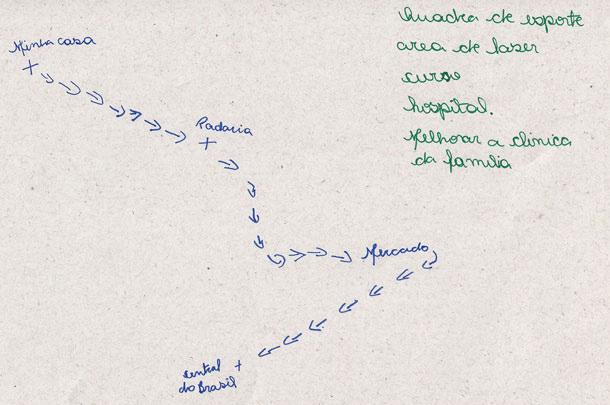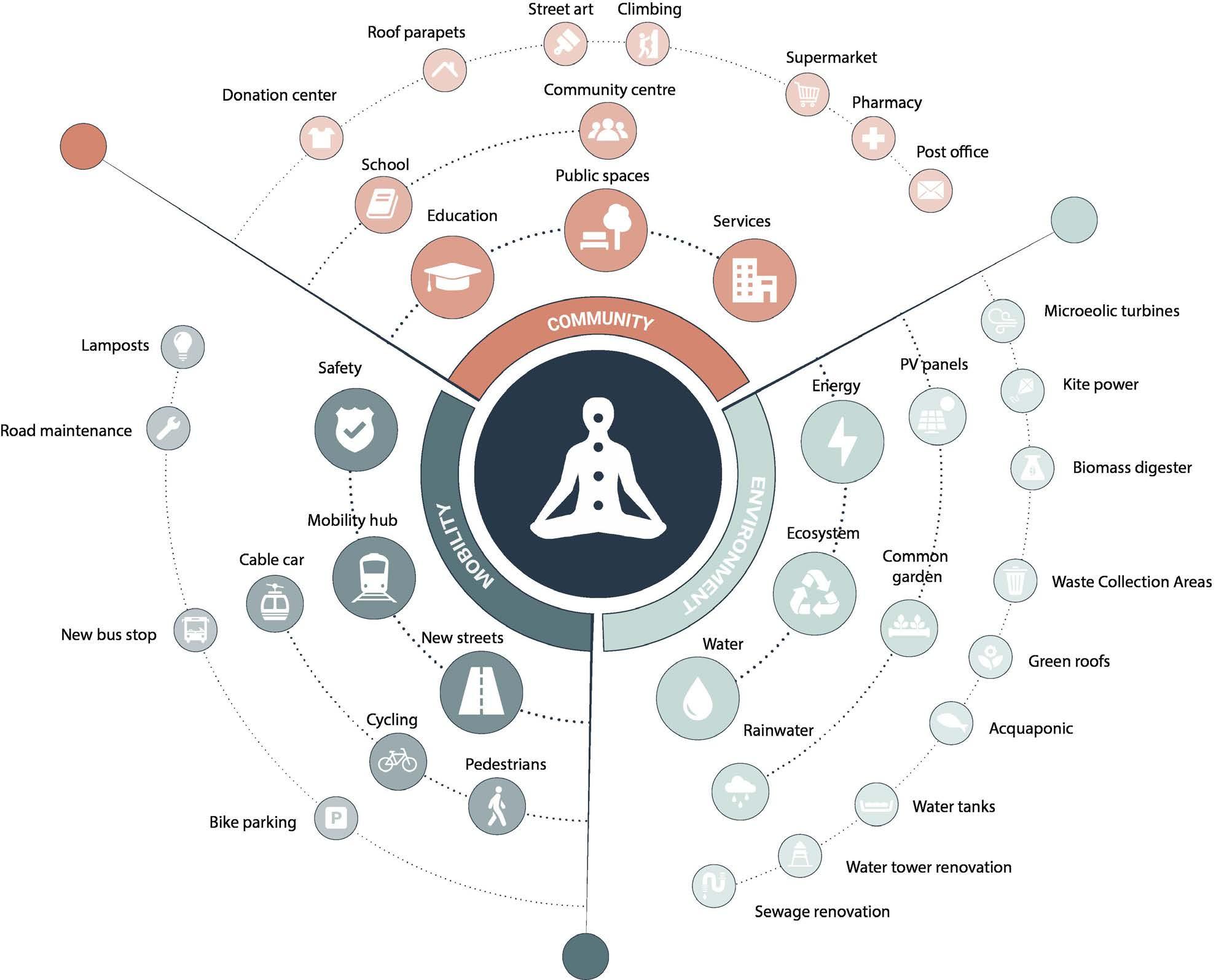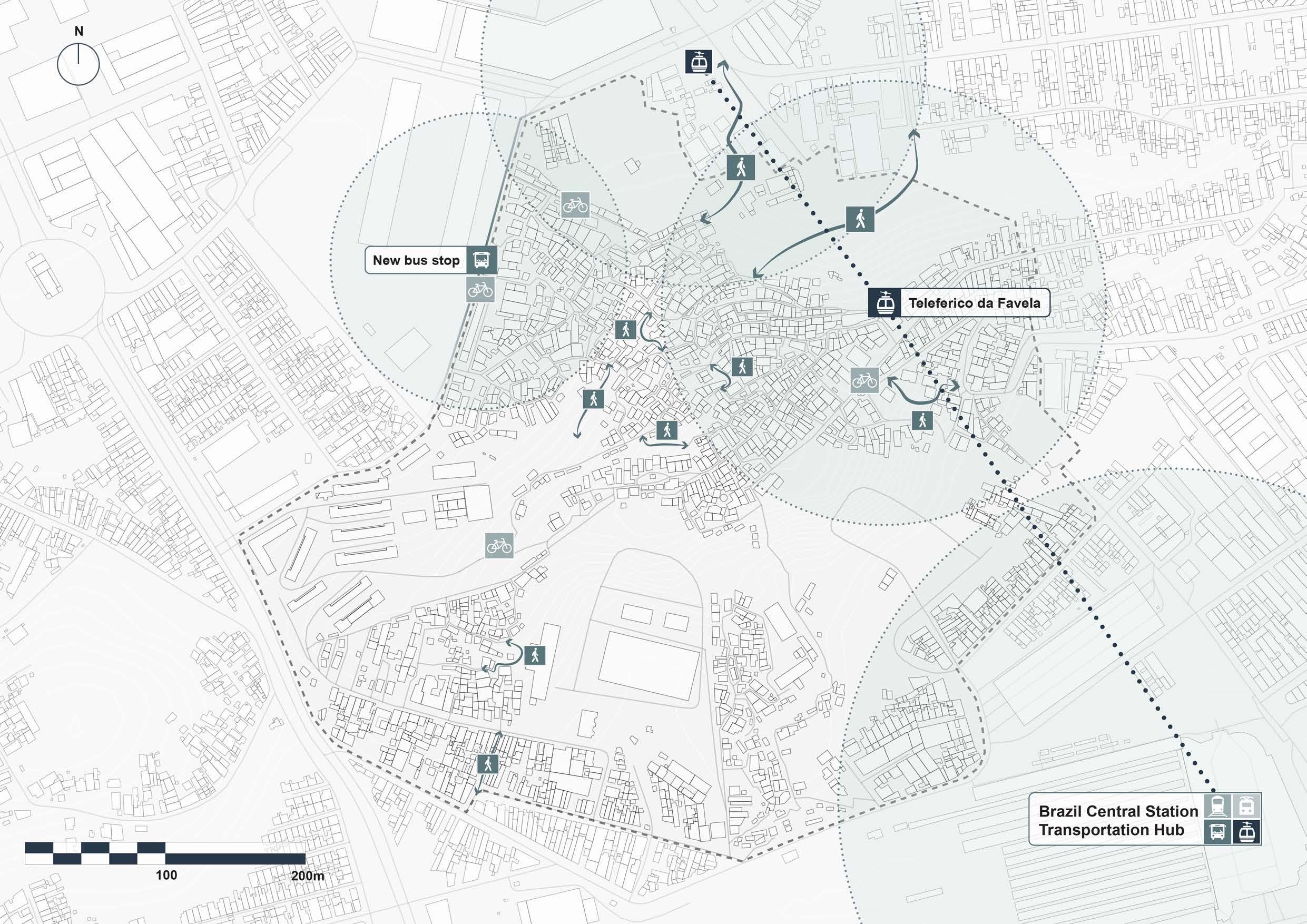
3 minute read
MORRO DA PROVIDENCIA - JAMIE LAUREN WORMS
Abstract
“Mental mapping, also called cognitive mapping, originated in the field of behavioral geography but soon became adopted in urban planning, anthropology, sociology, psychology, and other fields. [...] The most essential meaning of mental mapping is to understand social space as perceived by those who live in it, in stark contrast to the formal maps of those who conceive urban spaces. Mental mapping utilizes the innate ability of people to produce cognitive images of an environment. [...] The mental mapping research with residents of Morro da Providencia sought to understand the transformation of social space through the centrally-planned. [...] All sixty of the participants were aged 18–70 at the time. Potential participants were approached while they were sitting or walking alone through the community. [...] Participants used a blue pen to represent places in the community that they remembered from the past [...] They next used an orange pen to represent their present lived space.[...] We therefore asked them to suggest their own infrastructure plans, using a green pen to draw them onto the same map they had produced with the blue and orange pens.”
Advertisement
Themes
Five major themes emerged including open public spaces, sanitation, access to food, transportation, and fear. The resulting analysis demonstrates how the conceived space of planners conflicts with the lived space of the favela residents regarding open public space, sanitation, food access, and transportation and how the lack of transparency results in fear. These point can be the starting points in order to identify social action able to revitalize the area. Considering a total of 62 maps has been identified as common themes: garbage removal (9 times), leaking sewage (7 times), lack of social space (21 times), mobility iussues (24 times) and lack of amenities (24 times). After the publication of the paper also, to confirm the suspicious of the favela residents, the teleferico has been closed due to “lack of maintenance”. Residents, after years, still need the teleferico in order to climb the hill and they hope that one day will be reinstated. It is necessary puctual and precise actions, as an acupuncture, in order to revitalize the area according to people dreams and necessities.
Maps
MAP 1 “In the blue map, which depicts the past, the drug traffickers occupied the corner. [...] As such, Bruno drew children playing with a soccer ball and a kite in the orange map, which depicts the present. He also drew one of the support towers of the new teleferico.[...] At the same time, he indicated long-ignored infrastructure problems.[...] To represent a desired, future social space, Bruno drew the green map: a street without potholes, an improved sewer system and a community soccer field.”
MAP 2 “For the past, he depicted an idealized rural landscape with open pastures dotted with scattered trees. Leonel made mention of the British Cemetery and the former house of the esteemed Brazilian novelist, Machado de Assis. For the present, he drew the community with many houses [...] Landmarks such as the Central Station’s iconic clock tower, the water tower, the Igreja Nossa Senhora da Penha church, the Capela das Almas chapel, and the Casa Amarela NGO community center mark the skyline. [...] Despite attention to detail, he did not include open, public spaces because, he said, “there are none.” His map of a desired future combines aspects of the past and present [...] He reduces the density of housing by razing the many small houses and replacing them with a few mansions and a public plaza (praca) in front of the church.”
MAP 3
“Other participants emphasized more specific aspects of the lack of open, public, and leisure spaces in the favela. Construction of the teleferico station obliterated Praca Americo Brum, the largest plaza in the favela. [...] Without any public spaces, he and many others explained that adults must now gather in bars while children are resigned to playing in the alleyways and rooftops for their two most popular outdoor leisure activities: soccer and kite flying.”
MAP 4 “A dominant theme involves access to food [...] A local supermarket is necessary to ensure that the residents have access to a variety of fresh and canned foods. [...] The map therefore emphasizes the vertical dimension, showing the steepness of her walk from her house (casa) down to thepadaria[...] It should be mentioned that grocery delivery services do exist, but they are prohibitively expensive for most residents owing, in part, to the man-power necessary to handdeliver groceries in such steep terrain.”
MAP 5“The Morar Carioca Project planned to overcome that accessibility issue by building a funicular tram parallel to one side of the staircase. However, that project would have required the removal of several historic homes an, no one wanted to displace any of their neighbors. [...] One of the partecipants put forth the idea of having an elevator built that would extend from the bottom of an old quarry to the small plaza in the upper favela. [...] Another partecipants suggested that instead of the funicular tram, an escalator could be built on top of the historic staircase.”
MENTAL MAPPING CREDIT: Jamie Lauren Worms





Catalysts Diagram




